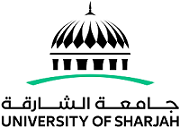The roles of Arylated gold nanoparticles in the differentiation of MG-63 cells into Adipocytes =دور جسيمات الذهب النانوية الآريلية في تمايز خلايا MG-36 في الخلايا الشحمية
Linked Agent
Khan, Amir Ali,, Thesis advisor
Date Issued
2021
Language
English
Keyword
Thesis Type
Thesis
Abstract
Understanding regenerative medicines requires the understanding of cellular differentiation. MG63 cells have the potential to differentiate into osteocytes and adipocytes. They also grow significantly faster than Mesenchymal stem cells (MSC). This makes them ideal in-vitro models to evaluate the effects of the covalently functionalized gold-aryl nanoparticles (AuNPs-C6H4-4- COOH) into adipogenic differentiation of MG-63 cells. Flow cytometry, confocal microscopy and inductively coupled plasma spectrometry were used to confirm the uptake of the gold-aryl nanoparticles by MG-63 cells. The cytotoxicity of the gold-aryl nanoparticles were tested at different concentrations and their effects on adipogenic differentiation were evaluated at a nontoxic concentration of 5 mM, which were present throughout differentiation. These nanoparticles had shown no effect on adipogenesis. The no effect of the gold nanoparticles was confirmed by lipid content assay and by the relative expression of adipogenic markers PPAR-γ, ADR1, GLUT1 and GLUT4 which showed no significant expression variation in between the treated and control groups. Furthermore, the effects of these gold nanoparticles were also evaluated on the common signaling pathways. The phosphorylation levels of 43 kinases sites were evaluated using a human proteome kinase array the analysis showed no significant changes in the phosphorylation level of 43 sites with 2 or more folds after the first 24 hrs and after 12 days of treatment of the gold-aryl nanoparticles during the adipogenic differentiating of MG-63 cells. This indicates that the gold nanoparticles have no effects on the signaling pathways and neither do have any effect on the adipogenic differentiation of MG-63 cells. These two key characteristics make the gold-aryl nanoparticles ideal for drug delivery in Osteosarcoma.
Note
A thesis submitted in partial fulfillment of the requirements for the degree of Master's of Science in Biotechnology, College of Applied Biology, University of Sharjah
Category
Theses
Library of Congress Classification
QS532.5.A3 AB136r 2021
Local Identifier
b13983490







